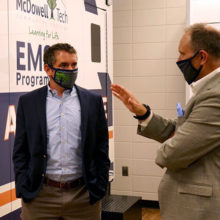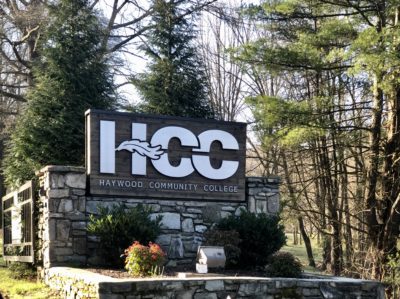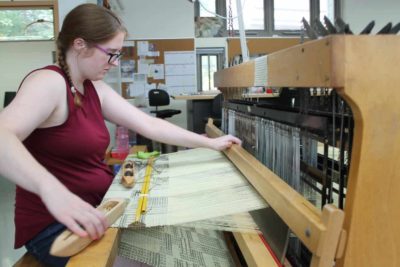
Share this story
As a state, we expect a whole lot of our community colleges, especially our small, rural colleges.
Haywood Community College (HCC) has an annual economic impact of $64.8 million, including $14.5 million in operations spending, $3.4 million in student spending, and $46.9 million in alumni impact, according to a study paid for in part by the N.C. General Assembly.
But those numbers don’t begin to touch the impact and importance of this community college to those it serves.
Some community colleges serve more than one county. HCC serves just Haywood County, which creates both an opportunity and a challenge.
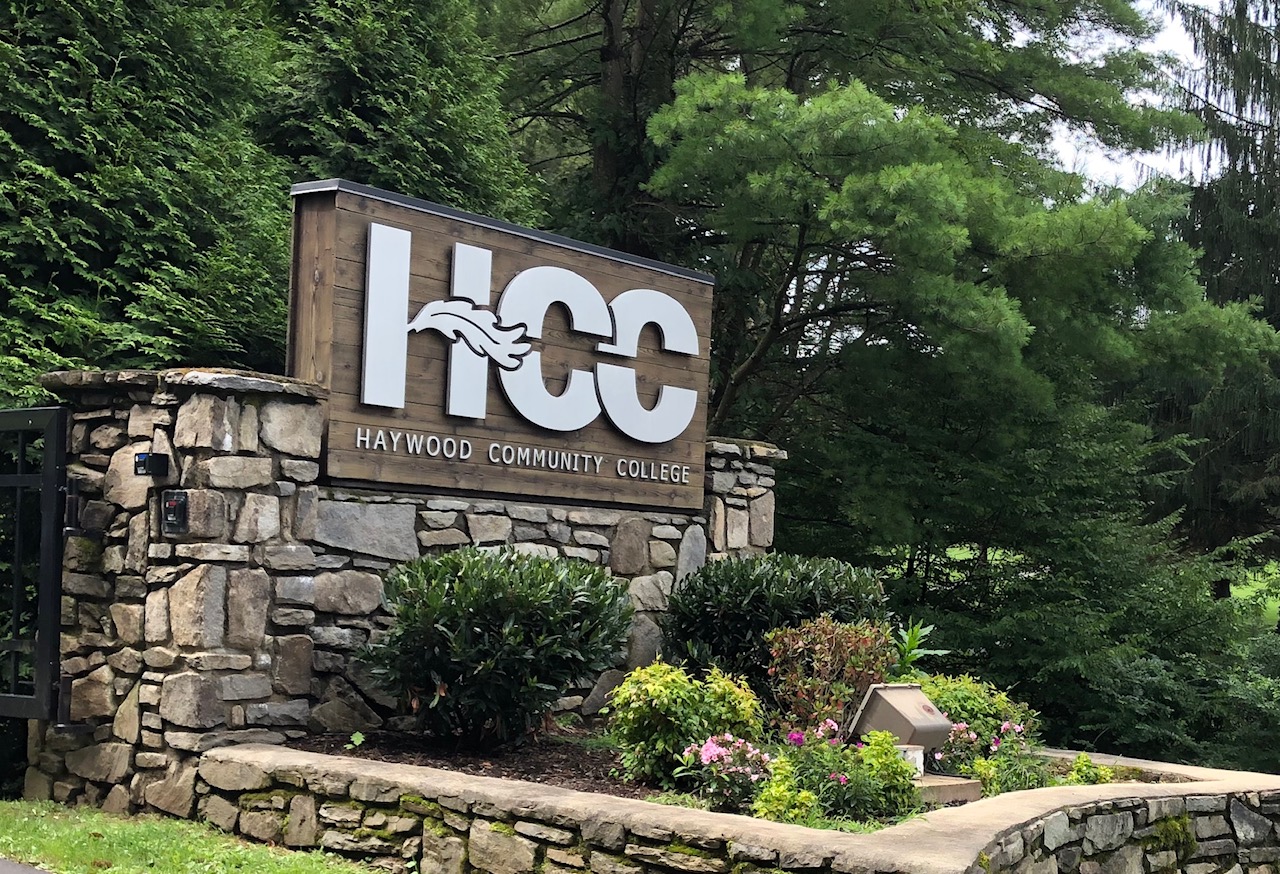


Enrollment has declined 18% since 2017 — a trend fueled nationally, statewide, and locally by declining birth rates and increasing rates of disconnection for 16-to-24-year-olds as well as adult learners.
But before we look at other factors for the enrollment declines, it is important to note that the vast majority of the enrollment decline at HCC happened in 2020 because of the pandemic.
Then in 2021, historic flooding devastated the county. The communities hit hardest included Cruso, Bethel, Center Pigeon, Lake Logan, and the towns of Canton and Clyde.
The county’s population is 62,476, according to the Census Bureau. And while the population is growing, its growth is limited by both the mountainous terrain of the county and Asheville serving as the regional hub just to the east.
The population is aging, with 25% 65 or older, compared with 17% statewide. It is 95% white. Of registered voters, 12, 403 are Democrats, 15,784 are Republicans, and 16,476 are unaffiliated.
In spite of and in light of falling enrollment, the pandemic, flooding, demographic shifts, and political trends, Haywood Community College will continue to anchor its community and serve as its architect of the future.
All the while, the community college is the ninth largest employer in Haywood County.
As it continues to offer an open door to all students, HCC must also find the resources to excel in all things, including training the early child care workforce, providing early child care, training first responders, supporting the mental health of those at the college and in the community, training the health care workforce, creating opportunities through its nationally-regarded early college, providing opportunities for other high school students to experience college, imagining the future of work, providing local leadership, and more.
A look at Haywood Community College provides a snapshot into just how much this state expects of our community colleges, and begs the question:
Why under-resource our community colleges when they are such important drivers of economic impact?
The funding of our community colleges
Recently, an overview of the community college system and its funding was presented to the joint education appropriations committee at the N.C. General Assembly.
North Carolina has 58 community colleges across the state, second only to California according to the presentation by Fiscal Research.
The mission of the system of community colleges is “to open the door to high-quality, accessible educational opportunities that minimize barriers to post-secondary education, maximize student success, develop a globally and multi-culturally competent workforce, and improve the lives and well-being of individuals.”
In 2021-22, 45% of community college students statewide were in curriculum programs (often these students spend two years at a community college and then go on to earn a four-year degree), 43% were in workforce continuing education, 7% were in basic skills, and 5% were in multiple instructional programs.
In the most recent budget, the state appropriation for community colleges was $1,357,604,076 (compared to $11,278,567,752 for public schools and $3,842,572,100 for the UNC system) — just 8% of the total $16,478,743,928 in education appropriations. While there have been increases in state appropriations since 2010, they have not kept up with inflation.
Because state funding of community colleges is largely based on enrollment, system funding has been cut by a little more than $12 million to reflect the enrollment declines seen across the system over the past three years.
Community colleges also receive local funding, federal funding, and tuition and fees.
But the state’s tier designations can complicate those funding sources for a county like Haywood. “The 40 most distressed counties are designated as Tier 1, the next 40 as Tier 2, and the 20 least distressed as Tier 3,” according to the N.C. Commerce Department.
Haywood is now designated as a Tier 2 county but previously was identified as Tier 3.
“This county has been listed as one of the higher tiers mostly due to a few pockets of some high-end housing and property values that are mostly not full-time citizens of this county. These second homes skew it,” said Wendy Hines, vice president of instruction. “Because when you look at the majority of our citizens, they’re not living an upper tier life at all. But then as a school, when we apply for grants, or programs at the state level, they say, oh, you’re too high of a tier, you’re not qualified.”
The system’s updated FY 2022-25 legislative agenda seeks an increase in state funding of $232 million over the next two years for increases in employee salaries and student investment.
The $145.88 million in student investment would be distributed across the 58 community colleges based on size.
Jason Hurst, president of Cleveland Community College, said, “If I’m not mistaken, if funded, this will be the largest increase in the history of the two-year community college system. So this is a huge shot in the arm for the system should this be completely funded.”
The timing of this “shot in the arm” is critical as the pandemic becomes endemic and the federal funds sunset.
HCC faces a $1.3 million anticipated deficit because of the funding model and enrollment declines. If fully funded, the legislative request would make up $800,000 of that deficit.
The consensus revenue forecast for North Carolina projects an extra $3.25 billion in state revenues for fiscal year 2022-23. With those extra funds, the revised revenue forecast for the state is $33.76 billion.
If the state does not invest in our community colleges now, then it is time to ask: What exactly would you want our community colleges to stop doing?
Contraction will not lead to stronger economies or brighter futures in this state where both sides of the aisle pride themselves on the state being #1 in business. The status quo won’t either.
Community colleges play a critical role in early child care
Haywood Community College doesn’t just train the early child care workforce in its community. It is one of a handful of community colleges that houses an on-site child care center.

The Regional Center for the Advancement of Children, a five-star center under the state’s licensed rating system, serves more than 80 young children with high-quality early care and education.
At a time when child care programs across the state are struggling with finding qualified teachers and several community colleges have closed on-site programs, the college’s leadership has remained committed to this program.
“It’s helping a workforce here in Haywood County,” said Karen Denney, vice president of business operations. Denney said the college’s board of trustees understands this value, no matter the challenges.
Its state-of-the-art building and high-quality learning opportunities keep families coming for generations.
“I believe the beauty of the center keeps us going,” said Eliza Dean, program manager and instructor of early childhood education at the college. “We’re kind of known as the best around here.”
There are waitlists for most age ranges, said Denise Worley, director of the center. She recently counted 60 children on the list for a toddler spot.
“‘My child went there, and I want my grandchild to go there.’ I get a lot of calls like that,” Worley said.



Though there is clear demand from families, Worley said finding qualified staff is her biggest challenge.
Worley and Dean are working to increase the local pipeline of teachers through the college’s early childhood education preparation program and its collaboration with the on-site center.
Enrollment in both the preparation program and the on-site center have not returned to pre-pandemic levels. Both cited a lack of public investment in the field as the reason.
“They’re not paid enough to want to stay and make it a career,” Dean said.
The center is funded through parent fees, the child care subsidy program, NC Pre-K funds, and pandemic stabilization grants. Teachers access benefits through the community college.
“We have leadership on our campus that believes in education, and they know in their hearts that starts at birth,” said Lynn Kincaid, an early childhood instructor and alumni of HCC. “We’re lucky here that we have a foundational understanding of what quality care and education is.”
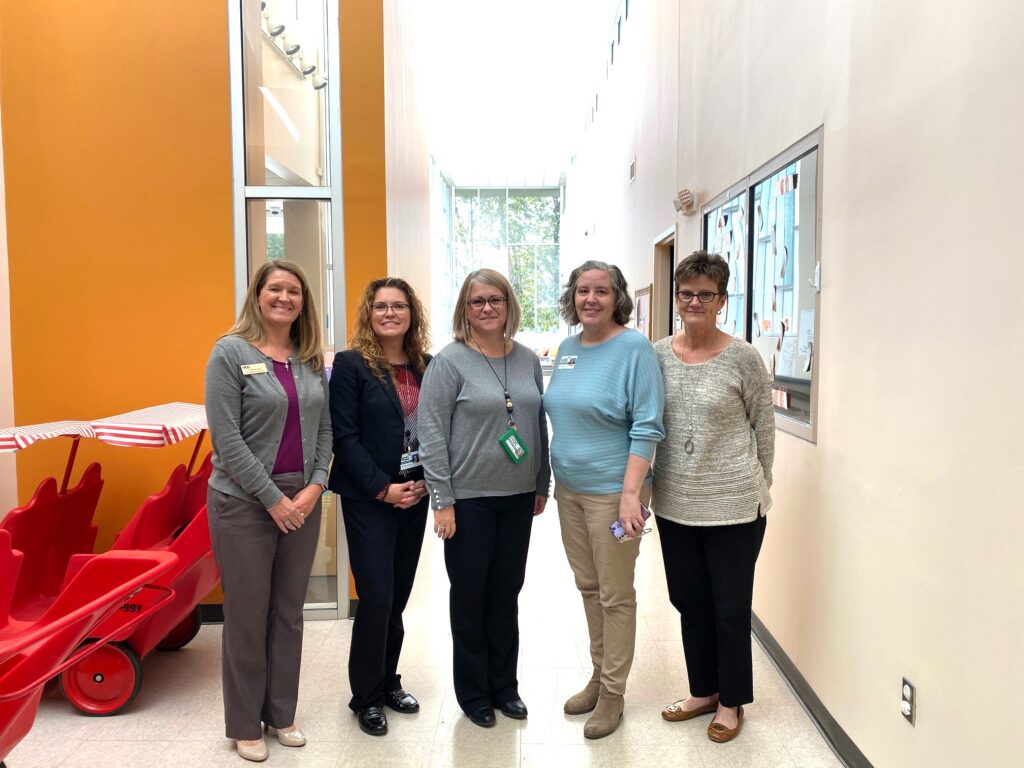
A mental health resource for the community
Haywood County is a “positive outlier for a variety of their practices and policies to address substance use and overdose prevention, particularly for people entangled in the criminal legal system,” according to this case study.
The case study finds:
Since 2003, Haywood’s overdose death rate has been steadily increasing, reaching a high of 30.9 deaths per 100,000 county residents in 2018, relative to a statewide rate of 22.4 deaths per 100,000 North Carolinians in the same year. The local jail population rate increased sharply from 2000, levelling off in 2013 as the local jail reached full capacity.
The case study concludes:
Haywood County leaders and community members who are committed to addressing rising overdose death rates and jail incarceration rates face the challenge shared by many rural jurisdictions across the country: how to better support people through community-based services rather than continuing to churn people through the cycle of arrest and incarceration.
That’s where Haywood Community College comes in.
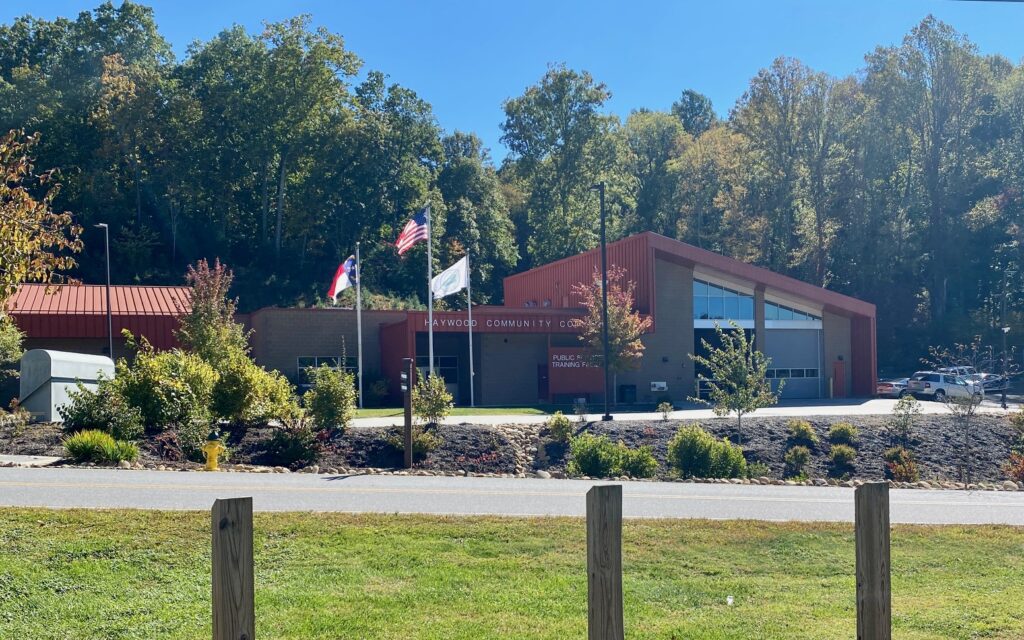
In 2020-21, 825 students completed emergency medical services training, 513 students completed fire rescue training, and 264 students participated in customized training sessions for community partners, according to HCC’s annual report.
The economic impact study on Haywood Community College looked at the colleges’ Basic Law Enforcement Training (BLET) Program. This program leads students into occupations like patrol officers for both police departments and sheriffs offices, supervisory positions for detectives and police, and bailiffs in the justice system. “Many of the BLET program students will enter the Haywood County workforce,” the study finds.
The economic impact of just this one program includes:
ALUMNI IMPACT | Former students of HCC’s BLET program added $779.1 thousand in income to the Haywood economy in FY 2019-20.
STUDENT IMPACT | For every dollar students invest in their education in the program, they will receive $6.70 back over the course of their working lives. This investment can also be seen in terms of a rate of return of 37.7%.
TAXPAYER IMPACT | Taxpayers will receive an estimated present value of $258.7 thousand in added tax revenue stemming from the students’ higher lifetime earnings and the increased output of businesses. Savings to the public sector add another estimated $13.8 thousand in benefits due to a reduced demand for government-funded social services in North Carolina. Throughout the students’ working lives, North Carolina taxpayers will receive a total of $272.5 thousand in benefits.
But the leaders at this community college are doing so much more than training first responders.
There were only six psychologists in Haywood County in 2021. So when the community college system announced they were going to pay for an individual at each community college to receive mental health training, Susannah High jumped on the opportunity.
High, director of student wellness and success, was familiar with the training, called Mental Health First Aid, a national program that teaches people how to spot and navigate the signs of mental health challenges.
“It’s always been something I knew existed,” said High, who is also a clinical social worker. “I’ve always been interested in it. It’s incredibly expensive. It was always out of our budget.”
High got trained with that original funding in March 2021. Since then, the college has used federal pandemic relief funding to pay for the costs of running classes. High immediately prioritized training faculty and staff at the college — including President Shelley White, an alum of Isothermal Community College.
The goal, High said, is to “train as many people as you can, give skillsets to as many people as you can, so that we can better support ourselves as a society.”
High has taught five classes and 36 people on Haywood’s campus, plus another five, she estimated, in partnership with Asheville-Buncombe Technical Community College.
After faculty and staff, her main goal was reaching students. With a dedicated funding source, High would ultimately like to be a resource for the agencies and organizations in the community as well.
Training the community’s health care workforce
Since 1966, Haywood Community College has been training nurses for the county it serves.
In 2021, countywide, there were 438 registered nurses, 40 licensed practical nurses, and 39 nurse practitioners.
HCC’s new health sciences education building will modernize and improve the learning environment for a new generation of student nurses to support health organizations in the region, according to a press release.
Here you can see the alumni, student, and taxpayer economic impact of the college’s associate degree in nursing program.
Doubling its current space, the new building is set up to mimic a real hospital unit with eight simulated hospital suites and eight suites in a skill development and practice lab. It includes an 85-seat lecture hall, 40-seat biology lab, 60-seat classroom, 8-bed skills lab, and 8-bed simulation lab.
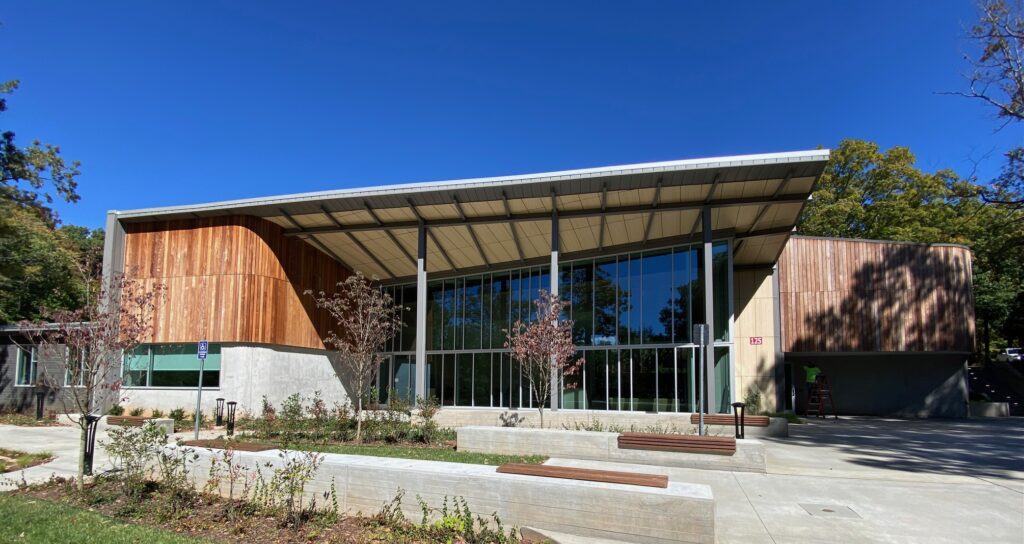



When middle schoolers visited campus, a student said, “Hey, that one looks like me.”
Through simulation training, students can learn how to manage a life-threatening complication, an unexpected reaction to a drug, or a post-procedure complication.
Realistic medication storage and dispensing equipment provide hands-on learning of the important skill of medication administration.
Several types of trainers provide practice in skills such as removing staples and sutures, oral and nasal swabs, avoiding nerves and vessels during injections, ostomy care, chest tube management, and infant vital sign measurement.
Augmented reality equipment exposes students to various medical-surgical and obstetric pre-programmed experiences with the guidance of a faculty that allows for prioritizing, decision-making, and application, followed by discussion.
It is and has to be state-of-the-art to ensure a pipeline of nurses for the future in this rural county. Applications for the 2023-24 nursing cohort are up 50% over last year.
Haywood Early College is a center of leadership and educational excellence
Haywood Early College is among just a handful of schools in North Carolina designated an Apple Distinguished School.
It is among the state’s very best high schools, and exceeded growth with a performance grade of 94.
How do they do it?
It’s the synergy of the leadership of Principal Lori Fox; an experienced, dedicated faculty; technology integrated into instructional practice; implementing school-day structure even when virtual; having super high expectations for kids; and teaching students who want to be students how to be students.
And teaching students who want to be leaders how to be leaders. Lily Seymour, a student at Haywood Early College, now serves as the student advisor to the N.C. State Board of Education.
Across Haywood County, 45% of high school students participate in at least one dual enrollment course, trying on both college and the future.
Learn more about our early colleges and career and college promise
The future of work
Philanthropies are investing in community colleges, noting the important role they play in economic growth and the future, especially in rural counties.
The Golden LEAF Foundation recently awarded Haywood Community College $1.45 million to upgrade facilities to prepare individuals for high-demand infrastructure and construction fields, including energy, communication, transportation, and construction industries.
The funds will be used to begin programs for electrical lineworker, truck driving, and broadband technicians. Each of these programs will provide short-term training that will lead to jobs that are in high demand and provide a solid career, all while supporting the local community, according to a press release.
The electrical lineworker course will give students the skills and knowledge to join the workforce after completion of a 16-week course. Participants will learn the knowledge and skills to install, maintain, and repair power transmission lines. This career has many opportunities for employment locally and across the region. Salaries are very competitive, with lineworker salaries double the average household income.
The new truck driver training program will start later in 2023. In this 9-week course, students can earn Class A and B commercial driver licenses and will find ready employment to help to address the shortage in the region.
As the facilities are updated, HCC will be positioned to offer broadband technician training. This course will be especially useful in helping to bring broadband to this rural community.
“The development of a skilled and ready workforce is critical to the economic wellbeing of a community,” said Golden LEAF President & CEO Scott Hamilton. “Golden LEAF is pleased to partner with Haywood Community College to develop programs that will lead directly to employment opportunities.”



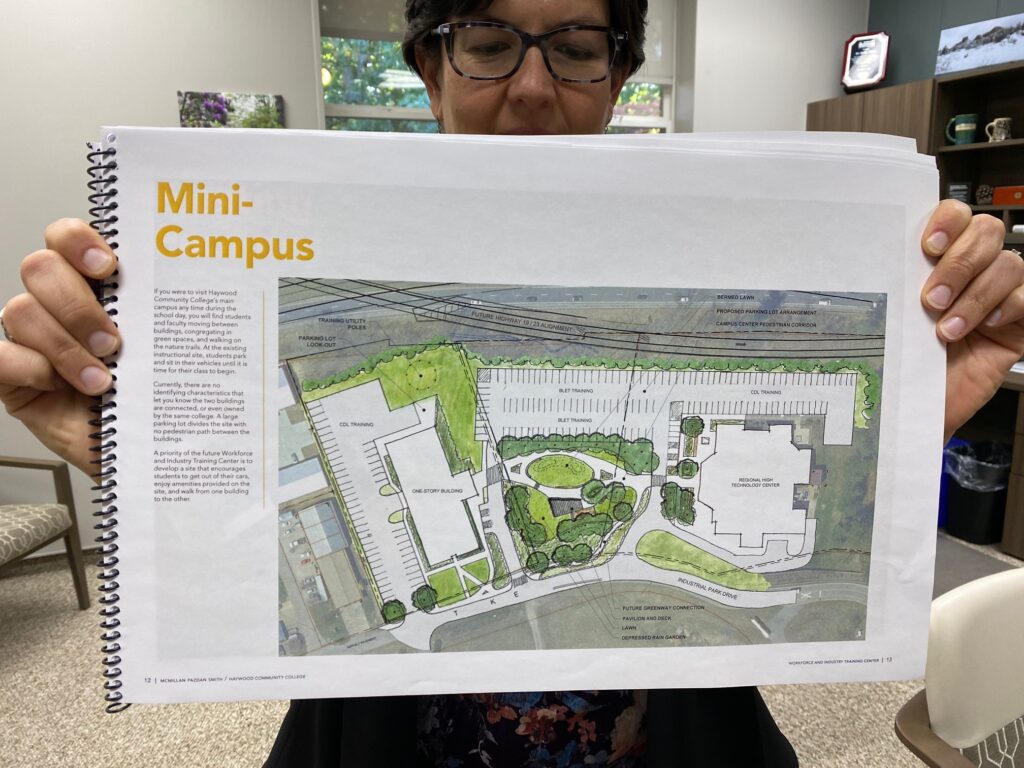
Our community colleges are a catalyst for economic mobility for students, economic prosperity for businesses, and economic impact for the counties they serve.
It takes leadership and strategic vision, but it also takes resources
Haywood Community College is home to nationally-recognized programs in forestry, crafts, and fish and wildlife, which in addition to translating into credentials and degrees, “reflect the unique culture and heritage of the area and draw people from across the country to attend the college.”
Decades ago, students built a grist mill on the campus with a water wheel, representing industry and progress in the Appalachian mountains.
But the grist mill, notes the book “Forest, Farm + Garden,” was also “a symbol of community, as many farming families who lived in relative isolation most of the year looked forward to the mill as convivial social gathering as much as for the necessity of grinding the corn.”
This combination of educating people and driving progress as an anchor institution for the community continues to this day.
HCC has an arboretum, an endowed Dahlia Garden, and walking trails for the community. It helps sponsor the annual Apple Fest in downtown Waynesville.
HCC had a team in the annual polar plunge for Haywood Waterways and holds an annual “Fish Fest” where elementary students learn to fish.
There is a spring art sale, an annual community science night for kids and families, and Bobcat College is a summer camp for middle school students. The college has a team in the Big Brothers and Big Sisters Bowl for Kids’ Sake.
HCC provides support and counseling for small businesses. Faculty participate in Leadership Haywood, “a year long program showcasing the building blocks of our county,” and they are active in the local chamber of commerce. They serve on the boards of the regional hospital, Haywood Pathways, United Way, Habitat for Humanity, Haywood Vocational Opportunities, and Reach, which works to prevent domestic abuse.
You get the idea. That list goes on and on.
“Our identity is very much Haywood,” said White.
White led the college through comprehensive strategic planning during the pandemic, and Haywood Community College’s plan for institutional excellence will bear directly on the future of the county:
ENROLLMENT | Increase enrollment to pre-pandemic levels (2019-2020) over a four-year period college-wide, with an emphasis coming from Haywood County residents
ENGAGEMENT | Consistent year-over-year improvement on engagement levels with students, community, and employees
FACILITIES & INFRASTRUCTURE | Progress on short- and long-term facilities and infrastructure needs based on our comprehensive infrastructure facility roadmap
TALENT | Meet or exceed expectations on employee engagement, diverse representation, people development, and talent recruitment, based on a defined workplace culture of excellence, well-being, and high performance
GROWTH | Increase student success metrics over a four-year period, to ensure students are progressing on or meeting their goals and the college is providing skilled workers to the community
It requires excellence. It requires collaboration. It requires HCC to look to the future and beyond not just as an institution but for the businesses and communities it serves.
And that requires resources.
You can learn more about the economic impact of each and every community college across North Carolina article here. You can read EdNC’s stories about the individual and collective impact of the 58 here.
That’s why community colleges — big and small, urban and rural — are requesting that shot in the arm.
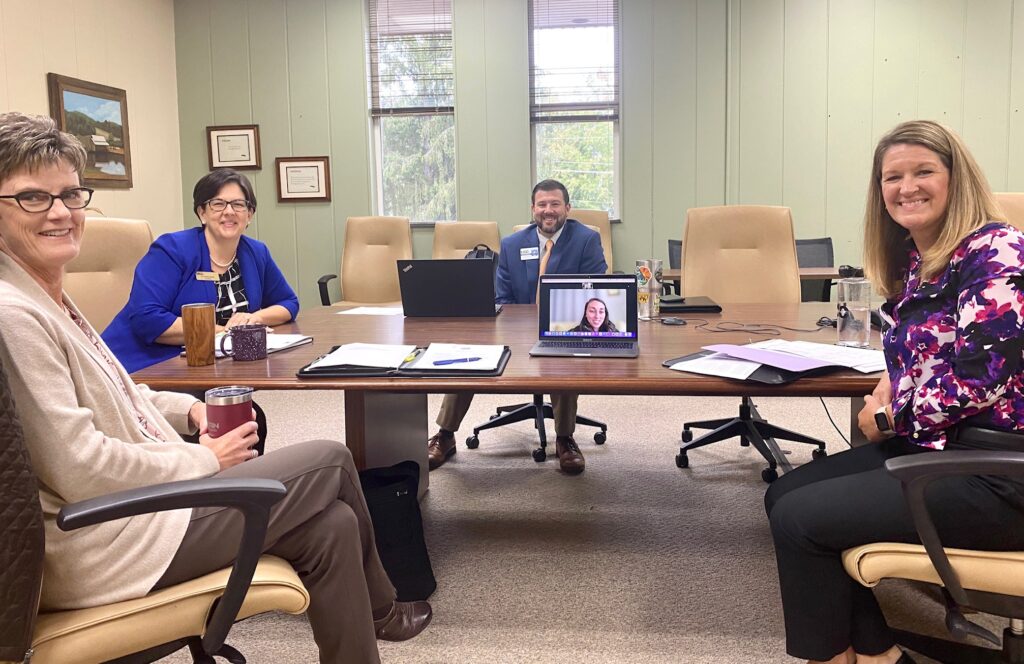
Behind the Story
I visited Haywood Community College on October 4-5, 2022, as part of EdNC’s Impact58 blitz of all of the community colleges statewide.
Our blitz was designed to study the economic impact of the 58 community colleges; their role in early child care, cooperative and innovative high schools, and career and college promise; as well as lessons learned from investments of federal funding.
Prior to the blitz visit, I worked with Principal Lori Fox at the Haywood Early College throughout the pandemic to better understand her leadership and the incredible outcomes of students at the Haywood Early College before, during, and after the pandemic.
On my visit to HCC, I met with the president one-on-one and with executive leadership, observed classes, visited the early college, toured the health sciences building, conducted interviews on EdNC’s research topics, and attended meetings of the board of trustees and the local chamber of commerce.
Nation Hahn contributed to the framing of this article. He interviewed President White on campus in fall 2022.
Liz Bell visited HCC to report on their early child care center and Mental Health First Aid in fall 2022.
Hannah McClellan’s reporting on community colleges and the budget is included.
Alli Lindenberg’s reporting on the heritage programs, economic tiers, and President White’s leadership is included.
Emily Thomas’s reporting on the historic flooding is included.
Alex Granados’s reporting on the consensus revenue forecast and the joint appropriations committee meeting is included.
Photos by Mebane Rash.



